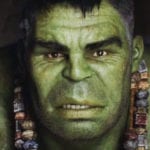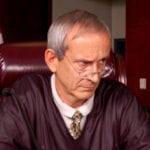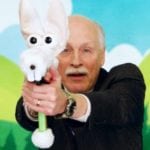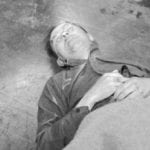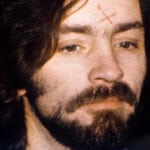 Weird Stuff
Weird Stuff  Weird Stuff
Weird Stuff  Health
Health Ten Confounding New Inventions from the World of Biomedicine
 Creepy
Creepy 10 Death Superstitions That Will Give You the Creeps
 Movies and TV
Movies and TV 10 Movies That Get Elite Jobs Right, According to Experts
 Weird Stuff
Weird Stuff 10 Times Real Laws Were Based on Bizarre Hypotheticals
 Animals
Animals 10 Inspiring Tales of Horses Being Human
 Mysteries
Mysteries Top 10 Haunting Facts About the Ghost Ship MV Alta
 History
History 10 Surprising Stories About the Texas Rangers
 Humans
Humans 10 Philosophers Who Were Driven Mad by Their Own Theories
 Miscellaneous
Miscellaneous 10 Video-Game-Worthy Weapons and Armors from History
 Weird Stuff
Weird Stuff 10 Warning Labels That Exist Because Someone Actually Tried It
 Health
Health Ten Confounding New Inventions from the World of Biomedicine
 Creepy
Creepy 10 Death Superstitions That Will Give You the Creeps
Who's Behind Listverse?

Jamie Frater
Head Editor
Jamie founded Listverse due to an insatiable desire to share fascinating, obscure, and bizarre facts. He has been a guest speaker on numerous national radio and television stations and is a five time published author.
More About Us Movies and TV
Movies and TV 10 Movies That Get Elite Jobs Right, According to Experts
 Weird Stuff
Weird Stuff 10 Times Real Laws Were Based on Bizarre Hypotheticals
 Animals
Animals 10 Inspiring Tales of Horses Being Human
 Mysteries
Mysteries Top 10 Haunting Facts About the Ghost Ship MV Alta
 History
History 10 Surprising Stories About the Texas Rangers
 Humans
Humans 10 Philosophers Who Were Driven Mad by Their Own Theories
 Miscellaneous
Miscellaneous 10 Video-Game-Worthy Weapons and Armors from History
10 Men Who Transformed Themselves Into Superheroes
Where have all the good men gone? And where are all the gods? They’re right here! The guys on this list were all just normal, everyday dudes until evil, nature, or plain bad luck reared its ugly head. That’s when these guys transformed themselves into superheroes and bravely battled the forces of darkness. Move over, Superman; here come the real heroes.
10 The Real-Life Priest Who Inspired Nacho Libre
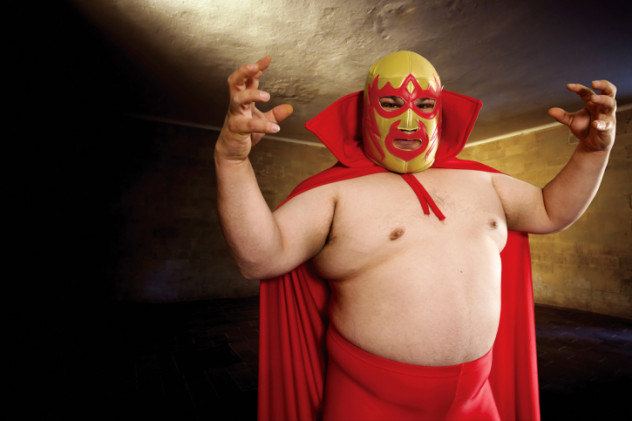
Father Sergio Gutierrez is a 70-year-old priest with a busted nose, bad eyesight, and his fair share of scars. He’s a poor man living a simple life, but despite his humble circumstances, Father Gutierrez has traveled to Japan, inspired two movies, and become a Mexican celebrity. And he did it all for the kids.
Father Gutierrez was born into poverty in 1945 and grew up to be a junkie in Mexico City. However, everything changed one day after he stumbled into a church. What happened next is unclear, as his story has changed from telling to telling, but Gutierrez was either tossed out, encouraged to join a seminary, or the recipient of a revelatory vision. Whatever went down, Gutierrez decided it was time to give up drugs and become a priest.
After going cold turkey, Gutierrez studied in Europe before arriving at a church in the Mexican state of Texcoco. As the new priest, Father Gutierrez started caring for young boys, providing them with food, shelter, and a musical education. The Texcoco diocese didn’t want to pay for his orphanage, so Gutierrez was forced to front the cash himself. That’s when he decided to enter the wild world of lucha libre, or professional freestyle wrestling.
Calling himself Fray Tormenta (Friar Storm), Father Gutierrez entered the ring in 1978, sporting a red and yellow cape and mask. Every morning, he trained in Mexico City. When he was done working out, he hurried back for eight o’clock mass. In between sermons, he bashed bad guys with appropriately biblical names like Judas and El Satanico. His trademark move was “The Confessor,” which involved mashing his opponent’s face into the mat.
Soon, the story of Father Gutierrez spread across Mexico, and the priest became a superstar. He battled opponents in the United States and Japan, inspired the movie Nacho Libre, and was known in his own church as Padre Tormenta. Though he never won truckloads of money, Gutierrez used all his earnings to fund his orphanage. Thanks to his success in the ring, over 2,000 boys have found a home in Texcoco. While he can’t wrestle anymore, Fray Tormenta still supports his kids by releasing mariachi albums. Not only can he fight—he can sing, too.
9 The Artist Who Fights Crimes
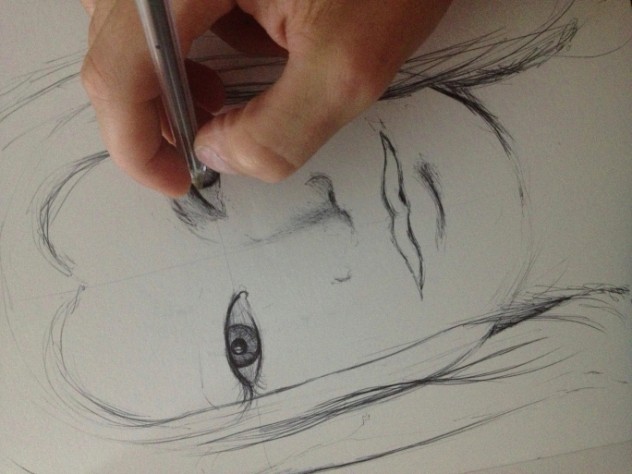
By day, Nitin Yadav teaches students in Mumbai how to paint and draw. When classes are over, Yadav becomes the bane of the criminal world. He doesn’t use high-tech weapons or mad martial arts skills. All Yadav needs to fight bad guys is a pencil and a piece of paper.
When Yadav isn’t teaching, he works as a criminal sketch artist, a job he got by happenstance. As a young man, Yadav supported his family by painting signs and license plates. One day, he was working on a city map inside a police station when he overheard someone trying to describe a thief. The witness was having a tough time, so Yadav offered to help out. Using his artistic skills, Yadav coaxed enough info out of the witness to sketch the crook’s portrait.
The police were impressed and asked Yadav to help out with future cases. Believing God wanted him to use his talent for good, Yadav agreed. As of 2013, he’s helped to apprehend over 150 criminals. Thanks to his sketches, the cops have caught murderers, a would-be assassin, and at least one child molester. Two years ago, Yadav became an Indian celebrity after his artwork helped police capture five men who raped a photojournalist. His work is invaluable, and Yadav almost always works for free.
Over time, Yadav has perfected his artistic methods and today relies on his “software book.” It’s a portfolio of noses, beards, lips, hairstyles, and the like. When interviewing a witness, Yadav pages through his book and asks, “What kind of mustache did the criminal have? What was his head shaped like? Can you pick out his chin?” As the witness selects facial features from Yadav’s book of body parts, Yadav puts them all together in one sketch that will hopefully help to bring the perpetrator to justice.
8 The Gay Vigilante Preacher

Reverend Ray Broshears was not your average pastor. Back in the 1970s, he was a Pentecostal preacher working out of San Francisco who also ran the Helping Hands Gay Community Service Center, a charity that helped gay teens and homeless people. Broshears was one of the first American clergyman ordained to perform same-sex marriages and was a leading figure in the Gay Pride movement.
Also, his life was in danger.
Even though San Francisco is famous for its liberal politics, hate crimes were shockingly rampant back in the 1970s. Broshears recorded 300 unreported assaults on gay people in a single six-month period. Many victims were scared to go to the police, fearing the cops would blame them for prompting the beatings. This wasn’t just paranoia either, as Reverend Broshears found out firsthand.
When a gang of thugs started lighting firecrackers in the Service Center parking lot, the concerned pastor called the police. When the cops showed up, they informed the hoodlums that Broshears had ratted them out. Angry, the gang cornered the pastor and beat him unconscious. After Broshears woke up, he was done turning the other cheek.
Inspired to take a stand, Broshears founded the Lavender Panthers, an LGBT justice league with around 20 members, both men and women. The Panthers were trained in martial arts like judo and karate. Whenever they hit the streets, they were armed with chains, pool cues, and red spray paint—perfect for blinding eyes. The group wore insignias and red and lavender armbands, and they patrolled the city in groups of three, ready to take on anything. In addition to battling bigots, the Panthers trained other LGBT San Franciscans in self-defense techniques.
Amazingly, it seems the police never interfered with the Panthers. Maybe that’s because Broshears didn’t outfit his group with guns—although he did keep a shotgun in his office. Maybe it’s because homophobes were too embarrassed to admit they’d just been beaten up by a gang of gay guys. Either way, quite a few haters learned the error of their ways thanks to Reverend Broshears and his lavender vigilantes.
7 The Man Who Moved A Mountain
Dashrath Manjhi was a young man in 1959. He lived in the East Indian state of Bihar. Life was difficult for Manjhi as he was a Musahar, one of the lowest Dalit groups in the Hindu caste system. Not long ago, Dalits were known as “untouchables.” Impoverished and illiterate, Manjhi worked as a common laborer until, one day, tragedy struck.
His wife was carrying water over a hill when she slipped and fell, badly injuring herself. Unfortunately, Manjhi couldn’t reach a hospital in time because there was a mountain of rocks in his way. Cut off from the rest of civilization, Manjhi’s wife quickly passed away. That’s when he decided to do something about that dumb pile of rocks.
Armed with a hammer and chisel, Manjhi attacked that mountain, spending every single minute chipping away at its rocky face. Most of his friends thought he was crazy, and Manjhi was soon considered the village idiot. But he never gave up. Despite the taunting, Manjhi kept hammering away, determined that no one would ever die because of that stupid mountain ever again.
Twenty-two years later, Manjhi was able to step back and admire his new road, 110 meters (360 ft) long and 8 meters (25 ft) wide. The path went straight through the mountain and cut the walking distance from one side to the other. What was once a 55-kilometer (35 mi) journey was now a modest 15 kilometers (10 mi), all thanks to one really determined guy with a hammer.
The “Mountain Man” of India wasn’t done being awesome. After he finished his construction project, Manjhi repeatedly petitioned the Bihar government to pave his mountain road. As of 2012, the state still hadn’t honored his request. They did give Manjhi five acres of land, which he turned into a hospital for the people in his community.
Manjhi passed away in 2007 due to cancer, but even though he’s shuffled off this mortal coil, his road still remains.
6 The Gurkha Who Fought Off The Taliban
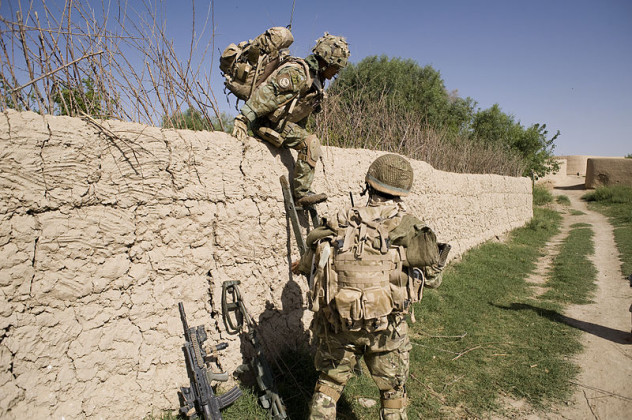
Nepalese Gurkhas are some of the toughest soldiers on the planet. Their motto, “Better to die than be a coward,” tells you all you need to know about these guys. In the past, we’ve read about Bishnu Shrestha, a soldier who took on a trainful of bandits, but today we’re talking about Corporal Dipprasad Pun, one of the toughest Gurkhas on the planet.
Stationed in Afghanistan, Pun was on sentry duty one night when he heard a strange noise coming from outside the walls. He climbed onto the compound roof to check it out, and that’s when he spotted two Taliban fighters rigging up explosives near the front gate. Most of Pun’s platoon was out on patrol, so he had to go it alone, Rambo style.
Two-to-one isn’t exactly a fair fight, but the odds got even worse for Pun when between 12 and 30 more insurgents showed up with machine guns and rocket-propelled grenades. Then again, Pun wasn’t the kind of guy to run from a fight. “I had so many of them around me that I thought I was definitely going to die,” he later told reporters, “so I thought I’d kill as many of them as I could before they killed me.”
Fighting enemies on three sides, Pun fired 400 rounds from his machine gun, launched 17 grenades, and used a mine to blow one of his enemies to pieces. Then, suddenly, one of the attackers scurried up the compound roof just as Pun’s weapon malfunctioned. Thinking fast, the Gurkha picked up his machine gun tripod and hurled it at his foe, all while screaming in Nepali, “I’m going to kill you!”
Fifteen minutes later, the fight was over. The insurgents Pun hadn’t killed had retreated into the night, leaving Pun alive and triumphant. For his bravery, and for saving three other soldiers inside the compound, Pun received the Conspicuous Gallantry Cross, the second-highest award a British soldier can win.
5 The Black Man Who Befriended The Klan
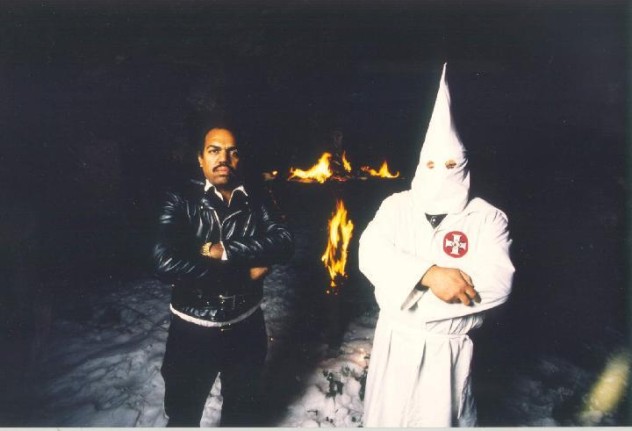
Daryl Davis is a musician with a really odd hobby. He spends his free time chatting with Klansmen. That’s especially weird since Daryl Davis is a black man.
As an African American, Davis has suffered his fair share of abuse. During his days in the Boy Scouts, he was pelted with rocks and bottles during a Massachusetts parade. In 1988, he was assaulted by racist cops. Baffled by the idea of racism, Davis set out to answer an incredibly personal question: “How can you hate me if you don’t even know me?”
Originally, Davis simply intended to write a book about the Ku Klux Klan. He interviewed white supremacists to figure out what was going on in their heads. Davis picked the KKK because in 1983, he actually befriended a Klansman at a Maryland lounge. Impressed with his piano playing, the Klansman struck up a conversation with the black musician, and the two were soon buddies.
Fast-forward a few years, and there’s Davis asking his friend for Roger Kelly’s phone number. Kelly was a Grand Dragon of the Maryland KKK and traveled with an armed bodyguard. Worried for his safety, Davis’s friend warned him that Kelly might actually kill him, but Davis ignored the warning and set up a meeting with the Grand Dragon.
As you might expect, the interview was tense . . . at first. As time passed, Kelly grew to respect Davis. The men met on multiple occasions to swap ideas, express their views, and find common ground. Even after Kelly was promoted to Imperial Wizard, he invited Davis to his house. Soon, Kelly was telling reporters he respected Davis and would “follow him to hell and back.”
Eventually, Kelly quit the KKK and gave his robe and hood to Daryl.
In fact, Davis has a closet full of robes given to him by friends who have quit the Klan. Over the years, Davis has invited Klansmen for rides in his car, visited their homes, and attended Klan funerals and weddings. So, why would Davis want to befriend people who hate his guts? Well, he believes in listening to what other people have to say because “while you’re actively listening to someone else, you’re passively teaching them about yourself.”
By interacting with so many Klansman, Davis shows them how their racist ideas are just plain wrong. Thanks to his patience and openness, he has seen a whole lot of people turn their backs on their upbringing. In fact, Davis once befriended all three Imperial Wizards in the state of Maryland, and thanks to their meeting, he convinced all three to leave the group.
After they quit, the Maryland KKK fell apart and has never made a comeback.
4 The Lone Doctor Of Guatemala City
No two ways about it—Dr. Jorge Chiu is awesome. This Central American doctor is the head cardiovascular surgeon at the Guatemala Military Medical Center. All day, he performs heart transplants and repairs blood vessels. When he clocks out, that’s when things get really intense.
After he steps out of the hospital, Chiu climbs into a Land Cruiser and patrols the streets of Guatemala City (skip to 1:07 in the video to see him in action). In addition to saving lives in the operating room, the good doctor is the sub-director of the country’s volunteer fire department, a unit responsible for local safety and first response. If there’s a blaze, shooting, or chemical spill, these are the guys who show up first.
Chiu’s crew gets quite a few calls. Back in 2012, there were 15 million people in Guatemala and about 100 murders per week. In Guatemala City alone, around 15 people are shot each day, and that’s not counting weekends when things get really wild. Making things worse, the Guatemala City police force is incredibly corrupt and incompetent.
What’s most amazing is that Chiu is the only doctor in Guatemala City who’s a working (but unpaid) Emergency Medical Technician (EMT). Everybody else on staff has good intentions, but no actual training. Chiu is stretched thin every night, racing across the city to help shooting victims, injured kids, and car crash casualties.
In addition to the lack of qualified doctors, Chiu is working with donated supplies and lousy trucks that stall if they sit too long. “You have to be a doctor, a paramedic, a firefighter, and a mechanic,” he tells Vice. All the while, he drives into some of the craziest situations imaginable.
He finds drunks lying on the street and encourages them to sit on the curb. He checks on people living in the city dump, a disease-ridden hellhole full of hidden air pockets waiting to suck up unsuspecting children. When he shows up at a bus crash, he’s barely able to work as people crowd around to watch. Once, he was shot at the scene of a crime. Despite the risks, Dr. Chiu never gives into despair. “We try to think,” he says, “at least, we make a difference.”
3 The Hero Of My Lai
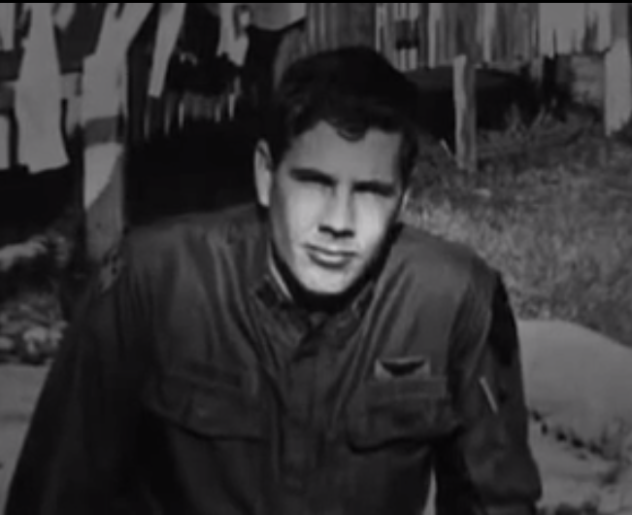
On May 16, 1968, Warrant Officer Hugh Thompson climbed into his H-23 scout helicopter and flew toward My Lai, a small hamlet in South Vietnam. He was covering a search-and-destroy mission, and his job was to draw out enemy fire. The day didn’t pan out like Thompson expected.
According to Army intelligence, My Lai was a Viet Cong stronghold, and Charlie Company was supposed to clean them out. Unfortunately, Charlie Company had recently lost men to a spate of booby traps, and now they were out for blood. Whether it was Viet Cong blood or not didn’t matter.
When the troops arrived, they raped and killed everyone in sight.
Up in the air, Thompson didn’t know what was happening. Bodies were everywhere, but he couldn’t communicate directly with ground troops. He wasn’t sure who or what was responsible . . . until he spotted an injured woman. Thompson dropped a smoke canister near the victim, hoping a medic would show up soon. Instead, Captain Ernest Medina put a bullet in the young woman’s head.
That’s when Thompson went into action. After spotting Lt. William Calley and around 10 men marching toward a bunker, Thompson parked his chopper right in front of the Americans. Once the helicopter was down, Thompson asked Calley to help him get the villagers out of danger. After the lieutenant made a wisecrack about getting them out with a grenade, Thompson instructed his buddies, door gunner Larry Colbourn and crew chief Glenn Andreotta, to lock and load. If Calley opened fire, mow him down.
As the Americans faced off, Thompson helped 15 civilians out of the bunker. Next, he asked a gunship pilot to transport the Vietnamese to safety. Two trips later, those 15 lucky people were out of harm’s way.
Before the gunfire finally stopped, the helicopter crew saved one last boy hiding in a ditch full of dead people. However, Thompson’s bravery was far from over. After an extensive cover-up, the My Lai perpetrators were finally court-martialed, and both Thompson and Colbourn were key witnesses. Andreotta had died in action.
For their heroism, both men were branded traitors and received hate mail and death threats. To make matters worse, the murderers escaped justice—except William Calley, who was eventually paroled. However, Thompson got the last laugh in 1998 when the Army awarded him the Soldier’s Medal. Instead of letting officials conduct a quiet ceremony and downplay My Lai, he demanded they hold it beside the Vietnam Memorial and honor his crewmates as well.
Even better, before his death in 2006, Thompson was introduced to several My Lai survivors, including the boy he helped rescue out of that ditch.
2 The Peacekeeper In Rwanda
Back in the early ‘90s, Rwanda was falling apart. After years of ethnic conflict, the country was barely holding together under a flimsy peace deal, which fell apart in 1994 after the president’s plane was shot down. Militant radicals took over the government and decided it was time for the Hutu majority to eradicate the Tutsi minority.
At least a million people were murdered while the world stood by and watched. Of course, there were heroes in the midst of all that chaos—people like Paul Rusesabagina of Hotel Rwanda fame. But he wasn’t the only guy on the front lines. Another superhero was Captain Mbaye Diagne, a United Nations peacekeeper from Senegal who saved lives while defying his orders.
Diagne’s job was to stop conflicts and observe the anarchy, not rescue Tutsis. In fact, the United Nations ordered its observers not to interfere in the madness at all, but Diagne didn’t listen. After a Hutu militia murdered the Tutsi-friendly prime minister, Captain Mbaye loaded her five children into his truck, hid them under a tarp, and drove them to Rusesabagina’s hotel, where he helped arrange their escape to Kenya.
On one occasion, he saved a woman from imminent execution by throwing himself in front of five machine guns. Another time, Diagne and several peacekeepers tried to transport Tutsi refugees from Paul’s hotel to an airport. Unfortunately, a Hutu mob attacked the caravan with machetes and sticks, but Diagne wasn’t about to run off. Instead, this unarmed peacekeeper stood at the back of his truck, spread out his arms, and shouted, “I will not allow you to harm them—you’ll have to kill me first!” While the convoy was forced back to the hotel, Diagne kept the mob at bay.
Perhaps Diagne’s most amazing moment of bravery came when he discovered 25 Tutsis in a particularly bad part of town. Since his truck was too small for all of them, Diagne made five separate trips to the nearest safe zone, stopping each time at 23 Hutu roadblocks. Back and forth, that was 230 times Diagne could’ve been killed. Luckily, the man had the gift of gab and could talk his way past most sentries. Those he couldn’t charm, he bribed with cigarettes and alcohol.
Tragically, Diagne was killed in May 1994 by a mortar round meant for Hutu extremists. Even worse, he was just 12 days away from going home. Diagne left behind a wife and two kids, but he saved, at the very least, 600 lives. In May 2014, the United Nations honored his heroism by creating the Captain Mbaye Diagne Medal for Exceptional Courage, an award for bravery in the service of the United Nations.
1 The Brakeman Who Saved A Town
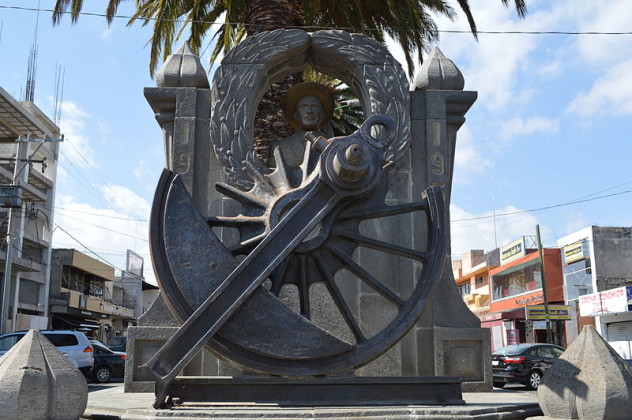
November 7, 1907 started out like any other day in Nacozari, a copper mining town in Sonora. As workers went about their business, 24-year-old Jesus Garcia was getting ready to deliver supplies to a nearby mine. That day, he was driving Locomotive Number 2, a train loaded with dynamite, which wasn’t out of the ordinary. Nacozari was a mining town after all, and you needed plenty of explosives to reach the copper in the ground.
On that day, the train’s conductor called in sick and wasn’t there to supervise the loading procedures. Had he been present, the conductor would’ve told the workers to put the dynamite in the rear cars, not the cars up in front. Since he was in bed, the workers loaded two tons of dynamite right behind the engine.
Once Locomotive Number 2 started down the tracks, sparks from the chimney stack flew into the dynamite car and sparked a fire. If the cargo were to go off there, not only would it have killed everyone on the train, it would also have detonated the nearby warehouse full of additional explosives and gas. Such a monumental explosion would take out the whole town.
But Jesus Garcia couldn’t open the throttle and abandon the engine. The tracks between Nacozari and the nearby mine weren’t on level ground. Instead, it was more of a hill. If Garcia left the train and the engine ran out of steam, it might roll back into Nacozari and blow everything to smithereens. It looked like a lose-lose scenario . . .
Unless Garcia drove the train into the wilderness before it blew to pieces.
That’s when the 24-year-old ordered everyone off the train and barreled into the desert. Up ahead was a loading area called Camp 6, and beyond that, nothing but open air. If Garcia could only get past Camp 6, he could jump off the train and survive. It was a desperate race against time, but just 50 meters (160 ft) away from the safe zone, the dynamite blew up.
The explosion shattered windows all the way back in town and killed a handful of people in Camp 6, including the heroic driver. However, despite the casualties, Garcia’s sacrifice saved the lives of hundreds in Nacozari. The young man became an instant legend. There are streets, bridges, and monuments dedicated to Garcia around the world. He even has his own stamp, songs, and holiday, Dia del Ferrocarrilero, or Day of the Railroad Worker.


